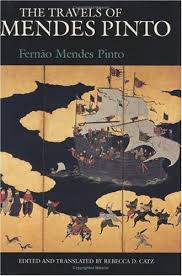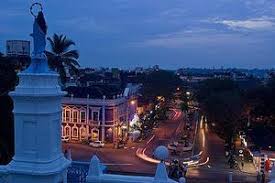Last week this column tilted at the protests by the ‘freedom fighters’ and the ‘Hindu’ nationalists suggesting that they were contributing to the problem rather than resolving one, by creating an environment where dialogue was not possible. In the process however,  the column also suggested that all was not well with some strands of contemporary Portuguese nationalist tropes that draw on colonial images and understandings. One of the arguments the column sought to make, was that both these nationalisms worked to support each other, and continue the post-colonial mess we find ourselves in.
the column also suggested that all was not well with some strands of contemporary Portuguese nationalist tropes that draw on colonial images and understandings. One of the arguments the column sought to make, was that both these nationalisms worked to support each other, and continue the post-colonial mess we find ourselves in.
However it is because we are inextricably twined together that dialogue is both necessary and the only option. Demonstrating perhaps the value of dialogue, the column generated a response from three Portuguese men, all of who have some sort of connection with, or interest in, India. Today’s column will extract portions of these responses from ‘the Portuguese’ and seek to dialogue with them, conceding some arguments, and disagreeing with others.
 One of the respondents argued that “Saying there's a transfer of culture does not mean you don't recognize other peoples’ cultures. I suggest you read Fernão Mendes Pinto who in the XVI century spoke of the superiority of the Chinese over the Europeans! But you need a really very sharp anthropological look to recognize your cultural debt to the Bororo people... Even in India, tribals are seen as less civilized, aren’t they? I don’t agree, but that they are seen as such is a fact.”
One of the respondents argued that “Saying there's a transfer of culture does not mean you don't recognize other peoples’ cultures. I suggest you read Fernão Mendes Pinto who in the XVI century spoke of the superiority of the Chinese over the Europeans! But you need a really very sharp anthropological look to recognize your cultural debt to the Bororo people... Even in India, tribals are seen as less civilized, aren’t they? I don’t agree, but that they are seen as such is a fact.”
The second of the respondents partially disagreed saying, “Good points, but not sure I share your conclusions towards the end. In any case, "a disco of fados, a Gallo de Barcelos, and scarves celebrating the Portuguese football team" are not "culture" (in general) but "a culture" (specific). And yes, I would say that, in comparison with other colonial encounters, the Portuguese was far more symmetric in terms of what you call mutual transfer/exchange of culture.”
The third of the respondents felt that “Jason falls into that common trap of academics: over-interpretation. The posters say nothing of what he reads there, they are not that smart. Their inspiration is not nationalistic tropes about civilizing missions, it is the internationalistic tropes about tour operating.”
To the first of the respondents, I would like to agree that the descriptions of Portuguese culture do not unilaterally deny the transfer of culture from the various parts of the world, and the former Portuguese territories to the Portuguese metropolis. On the contrary, there is a good amount of the mythology of the country that acknowledges and celebrates this mixture. However, we must acknowledge, if we are to challenge and move forward, that there is a dominant tendency, that seeing Portuguese culture as European, falls into the trap of acknowledging it as superior and having contributed more than it has received. As an illustration, but also to complicate the image and point out that it is not always an ‘us’ south Asians (colonized etc.) versus ‘them’ Portuguese (colonizers etc), contemplate the following  anecdote, recounted by a Portuguese historian. He pointed to the historical works of Teotonio De Souza as significant to the intellectual world of the Indo-Portuguese. Too many of the rest he argued, were still using terribly antiquated notions. He pointed with some horror, to the works of a Portuguese historian of Goan origin who still used ideas like India being in a state of barbarity until the Europeans (namely the Portuguese) brought culture and Christianity!
anecdote, recounted by a Portuguese historian. He pointed to the historical works of Teotonio De Souza as significant to the intellectual world of the Indo-Portuguese. Too many of the rest he argued, were still using terribly antiquated notions. He pointed with some horror, to the works of a Portuguese historian of Goan origin who still used ideas like India being in a state of barbarity until the Europeans (namely the Portuguese) brought culture and Christianity!
Sticking with history, the first respondent should be reminded that merely because Fernão Mendes Pinto spoke of Chinese superiority, does not make him representative of Portuguese society for that time, nor for the same society in different other periods. Once again, this does not deny the capacity of the Portuguese to recognize superiority or merit in the Other. It merely affirms the fact that societies are polyphonic – they speak with many voices. The voice of Fernão Mendes Pinto was one of these voices, and possibly at times, a marginalized voice.
The more interesting observation of the second respondent was to repeat the Lusotropical illusions that the Portuguese colonizers were more symmetric in the exchange of culture. Lusotropicalism thrives on the idea of Portuguese colonialism being a  good, equitable and gentle colonialism. A response to this idea would not be to counter Portuguese colonialism as bad, violent and inequitable, but point out that the reason we do not see British colonialism as symmetric, is because of the way the British colonial state represented its colonialism; as non-interfering in the cultures of others, and of not mixing racially with its subject populations. The transfer of culture is not a conscious choice, it occurs through unconscious actions in the daily lives of people. Where the colonial state was not around to bar such quotidian mixings, as very often the Portuguese state was unable or ideologically unwilling to do, one sees a greater amount of mixing. We have to bear in mind that we should not, as we often do, take the representations of the colonial British too seriously.
good, equitable and gentle colonialism. A response to this idea would not be to counter Portuguese colonialism as bad, violent and inequitable, but point out that the reason we do not see British colonialism as symmetric, is because of the way the British colonial state represented its colonialism; as non-interfering in the cultures of others, and of not mixing racially with its subject populations. The transfer of culture is not a conscious choice, it occurs through unconscious actions in the daily lives of people. Where the colonial state was not around to bar such quotidian mixings, as very often the Portuguese state was unable or ideologically unwilling to do, one sees a greater amount of mixing. We have to bear in mind that we should not, as we often do, take the representations of the colonial British too seriously.
To finally address the last respondent; yes, it is possible that the last column was an over-interpretation. That possibility exists. But as with all columns, the point was not to establish an unassailable and definite truth, but to contemplate the possibility of the general points being argued. The posters of the Euromilhões lottery were merely an excuse. To however deny entirely the possibility of colonial stereotypes continuing to populate contemporary  Portuguese imagination would be to affirm the possibility that colonial imagery still does play a role, and that the contemporary Portuguese are unwilling to talk about it. Furthermore, tourism is not an innocent bread-winning exercise. Tourism rests critically on colonial imagery, as well as colonial relations. One does not see mass-tourism from the global south to the global North. The touristic locations of the North are marketed differently from those of the South. Furthermore, as the subsequent column will go on to explain, the character of tourism in Goa, is not so distinct from that in Portugal.
Portuguese imagination would be to affirm the possibility that colonial imagery still does play a role, and that the contemporary Portuguese are unwilling to talk about it. Furthermore, tourism is not an innocent bread-winning exercise. Tourism rests critically on colonial imagery, as well as colonial relations. One does not see mass-tourism from the global south to the global North. The touristic locations of the North are marketed differently from those of the South. Furthermore, as the subsequent column will go on to explain, the character of tourism in Goa, is not so distinct from that in Portugal.
To conclude, dialogue, as in the act of speaking to each other, may possibly help more than violent protests. Dialogue is not a one-way street, in pointing out possible problems with the Portuguese we open up the space for them to point out our own weaknesses. For example, as first respondent pointed out, don’t most Indians see the tribals of South Asia as less, or uncivilized? Do we not for this reason see our colonization of resources in their homelands as legitimate?
(A version of this post was first published in the Gomantak Times 24 Nov 2010)









